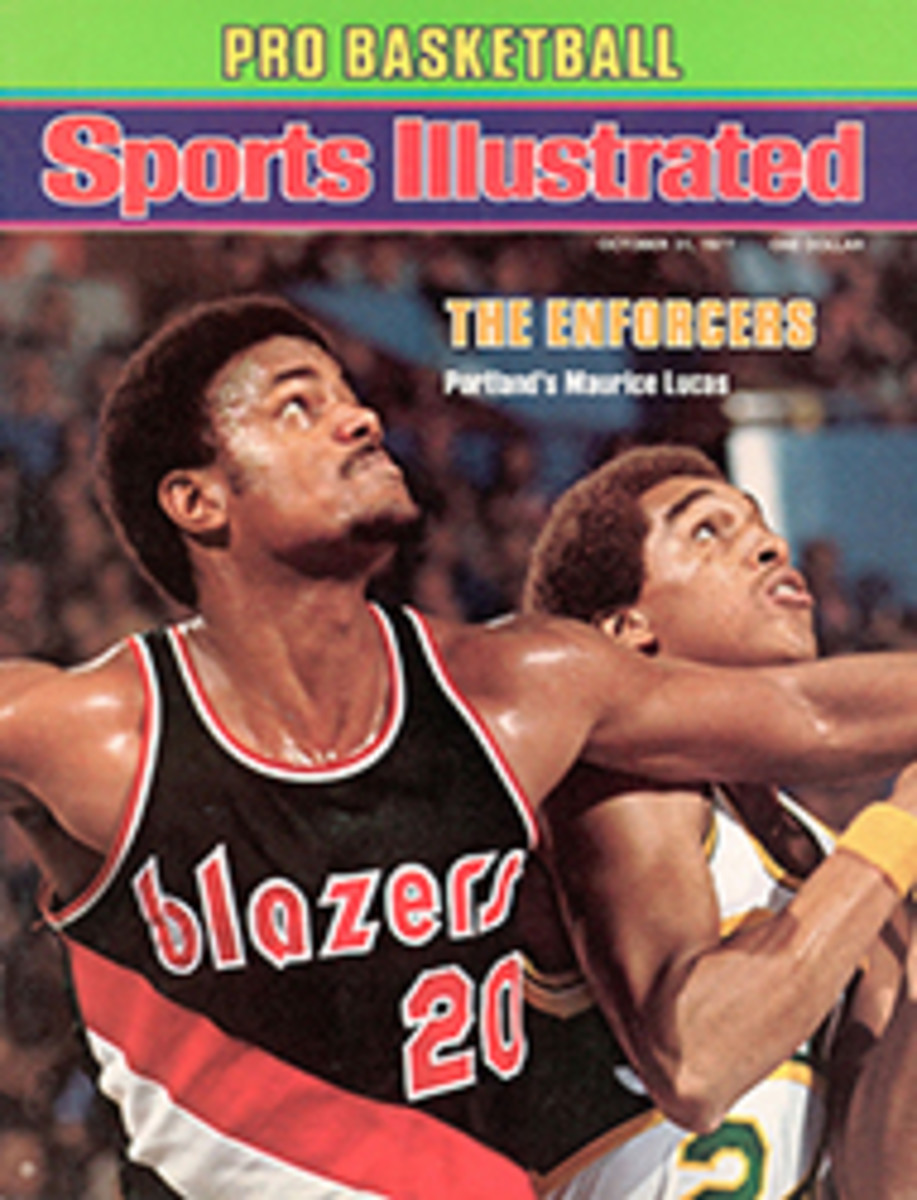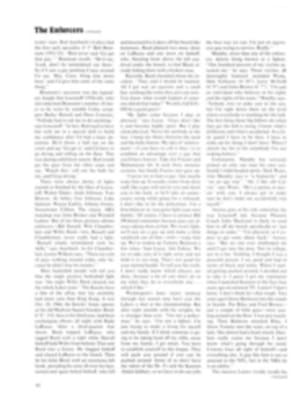
New tune on a stringed instrument
On these fall days bow hunters are cautiously moving along the forest trails, slipping silently into fields, standing motionless behind rock ledges. It takes a sharp eye to spot them. They dress in camouflage clothes, sometimes darkening their faces for further disguise, blending into the multihued foliage. They are a determined breed who deliberately shun the advantages of modern weaponry for the challenges of the primitive.
Until just after World War II, when the fiber-glass laminated bow with its improved accuracy and durability was developed, archers were a minuscule percentage of the country's hunters. Today they number close to three million. There are special bow hunting seasons, which in most cases take place before regular shooting seasons, and often they are as long, or longer.
Neither gun hunters nor game commissions have lost much sleep worrying about the game supply after bow hunting seasons; with their low success ratio, archers have little effect on game populations. Their slow, cumbersome, short-range weapons give game more than a sporting chance. This, in fact, has been a basic lure of bow hunting: the pitting of man against animal on elementary and demanding terms. Only the most optimistic bow hunter expects to return from a day in the field with meat for the freezer. Indeed, for every bow hunter who does, upward of 30 do not, which is why game commissions can afford to be liberal in setting archery seasons.
Or can they? That question is being asked this year in more than one state game department and, disconcertingly, the answer is not as clear-cut as it should be. The reason is the arrival on the scene in the last few years of a contraption known as the compound bow, which has revolutionized the sport of archery.
The compound bow has actually been around for almost a dozen years—it was invented in 1966 by a Missourian, Holless W. Allen—but in its early form it was crude in design and construction, and illegal for hunting in most states. It was not until the 1970s, when several archery manufacturers began experimenting with it, that the compound finally interested hunters. The largest bow manufacturer, Bear Archery, which produces 30% of all the archery equipment sold in the world, was one of the last to get into compounds. When it did in 1974, after several years of research and testing, compound sales took off. Today Bear produces seven different models ranging in price from $65 to $269.95.
"The compound is here to stay," says Fred Bear. "Since it has been made legal for hunting, it has taken over. There is still a place for the conventional bow, and a lot of folks like me will go on shooting them, but the trend is definitely toward the mechanical bow."
The key word here is mechanical, and it is at the root of most of the objections to the use of the compound in hunting. Like the longbow, the compound is hand held, hand drawn and hand released, but otherwise there is little resemblance between it and the longbow. The compound looks like a Rube Goldberg contraption. Its bowstring is connected to what seems to be enough steel cable to winch a truck, which in turn is threaded through a series of eccentric pulleys that make the bow look like a lopsided cat's cradle. It has wheels and arms and gears and bolts and is, in short, a hodgepodge of wood, fiber glass, metal and plastic. There is only one word to describe the compound: ugly.
The advantage of the compound is the ease with which it can be drawn. A regular bow heavy enough for hunting requires considerable strength to bring to full draw. Few hunters can hold a 60- or 70-pound bow at full draw for more than eight or ten seconds. With the compound, it is possible to hold, and hold, and hold.
In oversimplified terms, the compound works like a block and tackle. Through the first half or so of the draw, a compound feels the same and requires the same strength as a conventional bow. But then suddenly the strain lessens by as much as 50% when the pulley with an off-center axle takes over. The string seems to stretch effortlessly, like a rubber band, to full draw position. More important, particularly for hunters, who make up 80% of all archers, the arrow can be held at full draw long enough and steadily enough to take precise aim. The compound also is more accurate. A compound bow sighted for 35 yards will probably be accurate at 30 yards as well as at 40, a margin unattainable with conventional bows, and improved accuracy means less crippled game.
Why then, with so much to recommend it, are some people nervous about the compound? The answer is probably more philosophical than practical. There is a sense of cheating, of doing something better with less (although in this case, considering all those wires and wheels, less is actually more) that tweaks the Puritan spirit.
Detractors argue that because an arrow shot from the compound has more speed, a flatter trajectory and greater accuracy than one from the longbow, the compound should be placed in the same category as a firearm.
"Several of my friends who are bow hunters," says Mike Kennedy, ex-sports editor of the Anchorage Daily Times, "argue that the compound bow takes much of the sport out of hunting, that it has increased tremendously the number of game animals killed, that the compound bow is attracting people to the sport who are more interested in the kill than in primitive hunting."
Increased kills, many feel, will lead to shorter bow hunting seasons. Jay Massey of the Alaska Department of Fish and Game says. "With hundreds of thousands of bow hunters taking advantage of modern technology and using modern, more efficient weapons, should bow hunters be given the advantage of special hunting seasons not available to other types of hunters?"
"The time one spends hunting with a bow and arrow is basically recreational time," says Dr. Barry Wensel of Whitefish, Mont. "If a bow hunter didn't want to do it the hard way, he would hunt with a rifle."
"The comparisons with firearms are utterly ridiculous," says Bill Wadsworth, who heads the bow hunting division of the National Field Archery Association and is chairman of the National Bow-hunter Education Foundation. "Sure, arrows propelled by a compound bow travel faster, but only about 8% to 10% faster. And sure, they have a flatter trajectory than those shot from stick bows, but you can kill a deer with a rifle and scope at 250 yards, and there is no way on earth to do that with a bow, compound or long. In the Eastern U.S. the average deer taken with a bow is shot between 17 and 21 yards from the hunter. The average range is only 10 or 12 yards more in the open country of the West. And remember, only the best archers ever take game at all with a bow—so it is clear that even those of greatest skill do not shoot, or try to shoot, at ranges competitive with firearms.
"I hunted with a longbow for 30 years before the compound came along," adds Wadsworth, "so I have no ax to grind either way. I think the bad publicity the compound has received is way out of proportion to the number of people who object to it. Unfortunately, the segment that does—only a handful of archers—has been very vocal. The inconsistency is that until modern technology made it possible to laminate fiber glass to wood—the first real breakthrough in archery—the sport was as dead as a dodo. You won't find many of these purists in the field with a bent hickory stick and a linen string."
Purists notwithstanding, some of the compound's bad publicity was engendered by the archery industry itself. Because archers tend to be more conservative than other hunters, they didn't take up compounds as fast as the manufacturers had predicted. In desperation, the industry decided to seek out the non-archer, promising in their ads instant hunting success. It doesn't matter that the ads were written by people who probably had never been in the woods, or who presumably had never considered the philosophical aspects of bow hunting. What does matter is that hunting guides in Montana, Oregon and Wisconsin, to name a few places, read the original ads and believed them. On that basis they had every right to raise questions about the compound. Although most have since revised their impressions, the ads are still being quoted.
Special bow hunting seasons are among the most productive ways of providing maximum recreation for hunters with minimum depletion of natural resources. The compound bow, rather than changing this, has brought the point home more strongly. Yes, there is reason to believe that the success ratio is up slightly since the compound became popular, although there are as yet no statistics to substantiate this. But the same educated guesses also suggest that the amount of game wounded and not recovered by archers is down.
Bow hunters cite reasons other than the compound that might also be responsible for slightly improved success ratios. The most significant of these is the dramatic increase in bow hunter education courses, now being conducted in 47 states, many of which require the six-hour course before the issuing of a license.
"The goal of our courses," says Wadsworth, "is first to produce good sportsmen and second to produce good bow hunters who can handle themselves in the field. What a lot of people have found out is that the compound bow may make shooting easier but the man behind the bow is still the key to performance."
Glenn Helgeland of Archery World agrees. "When the compound first began catching on," he says, "everyone wanted to try it. But most of these people didn't have sufficiently good shooting form to utilize all its advantages. Sure, they shot better than with a conventional bow, but all the miracles the ads predicted were hard to find. Most people still ended the season with an empty freezer. But they discovered that they liked the drop-off, that it was more comfortable and it made shooting more fun."
That, of course, is the real key to the compound. Plainly and simply, bow-and-arrow shooting is more fun. You don't have to be in quite as good condition, you don't have to do quite as much preseason preparation, you don't have to be quite so precise in aim and release to get comparable results with a compound as with a longbow.
"The compound is the future," says Bud Kellogg, head of Tom Kat Inc. in Mahopac, N.Y., who reports archery sales up 50% this season over last, with 80% of them compounds. "When you think of the pressure on gun hunters today, you know that this is where tomorrow's hunting has to lie. The compound bow, like the spinning reel, is here to stay."
PHOTO

